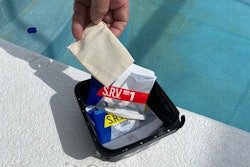
It’s easy to overgeneralize the regional differences in the pool/spa/aquatics markets. The Northeast, for example, has long been associated with the aboveground or package pool market. But to leave it at that ignores the fact that some of the most fantastic custom installations exist in Pennsylvania, Connecticut and New York.
Similar examples can be found all over the country. Southern Florida has long been associated with Art Deco design as well as backyard installations that mimic tropical lagoons. In California, you’ll find projects inspired by Spanish Colonial Revival Design. In Phoenix, you see find pools with a modern flair, while homeowners in mountainous regions favor alpine-inspired work.
With all of that diversity in mind, there remains something to be said for how both the landscape and culture found in a given region can and do influence the work of aquatic designers and builders. Certainly every project and every set of clients are different, there’s also no question that many of the great designers working with water are heavily influenced by their surroundings. For example, it’s hard to think of the great Brazilian landscape artist Roberto Burle Marx without seeing how the lush environs he worked within influenced his work. Today, Marx’s home near Rio de Janeiro is a national landmark precisely because it is so beautifully expressive of Brazilian culture and creativity.
The same can be said of Luis Barragan and Ricardo Legorretta, the great Mexican design masters who were inspired by the arid landscapes of their homeland. In their case, they took their regional influence and created a distinct genre of contemporary design that celebrates the stark desert landscape as well as vividly colorful nature of Latin culture.
Perhaps the idea we can take away from such sweeping analysis is that in many, if not most situations, the overall setting can serve as a powerful inspirational palette. One of our greatest examples can be found in the works of Frank Lloyd Wright. To truly understand the genius behind his work, it’s tremendously helpful to consider the setting. Wright’s Prairie Homes in Oak Park, Ill., were heavily influenced by sprawling landscapes of the Midwest, while the transcendently hypnotic design of Taliesin West was a direct response to the almost sculptural forms of the Sonoran Desert. Yes, in those works, we see many of Wright’s trademarks, but yet the designs are vastly different in nature precisely because of the surroundings for which they were created.
In this October edition of AQUA Architecture you’ll find two strong examples of aquatic designers working in ways that are directly influenced by both the landscapes and culture of the regions in which they work.
In “Luxury Among the Vines,” by Tami and Ian Charnley, we find truly exquisite work driven by the ambiance, sweeping beauty and even hedonistic indulgence of the wine regions of California’s Central Coast. In their discussion, the Charnleys discuss three projects that typify their work creating lavish outdoor settings that complement expansive surrounding views of rolling hills covered in vineyards, as well as their clients’ desires for outdoor entertaining in spaces that celebrate the region’s penchant for casual luxury.
You’ll also find “Exporting Elegance” by Joan Roca, a true master of design hailing from the breathtaking coastal countryside of Costa Rica. In his discussion, Roca chronicles his expansion into neighboring Nicaragua and how both the settings and the nature of the market there fuel his own creative fires.
In both cases, we see inventive designers who understand the psychology that drives demand for their services and how the attitudes of their clients are often driven by their surroundings. Neither the Charnleys nor Roca are necessarily tied to one particular style or another, but all the same their work reflects a sensitivity and passion for regional landscapes and how those natural features inform their clients’ own ideas about what they want in their exterior spaces.
I must confess that in both cases I have personal experiences that inevitably caused the work of these terrific artists to resonate in my own mind. In the Charnley’s case I currently live on California’s Central Coast and, indeed, chose this area for many of the exact same regions that their clients live here. The stunning beauty of the coast, majesty of the Redwoods and richness of the region’s agriculture are truly the stuff of dreams for many. Is there a particular style associated with the region? Not really, but all the same the ambient natural and cultural qualities are evident in the works of local architects, landscape architects and aquatic specialists.
As for Roca, I visited Joan in 2006 for a few days of touring his work and taking in the sights and culture of Costa Rica. What I found there was an aquatic-influenced lifestyle that is defined by the warmth of the people and intricate beauty of country’s vast expanses of verdant forests and meadows. Roca’s work, which more or less toggles between contemporary and naturalistic design, stands as a profound tribute to the region and also an example of creative impulses driven by it.
In both cases, the characteristics of the locales generate impactful resonances that can’t help but inform the work of designers working to create aquatic art. On the surface, one might not see much in common between the two regions, but when you peel back the cultural surface, what you find are places where people come to enjoy the good life, to experience all the wonderful aspects of owning a home that is an expression of passion and personality.
I’ve experienced similar revelations when traveling in places like Hawaii, Florida, Texas, the Shenandoah Valley, the Rocky Mountains, areas of the Deep South and the upper Midwest. In all those places, I found people who are passionate about their homelands and aquatic artists who utilize local flavors to draw out and express their clients’ love of the natural surroundings and culture.
Whatever the region, the best designers seem to intuitively embrace their regional influences while at the same time honoring the fact that the way those surroundings elements are expressed through their work are as varied as the people who inhabit those places.
Comments or thoughts on this article? Please e-mail [email protected].








































